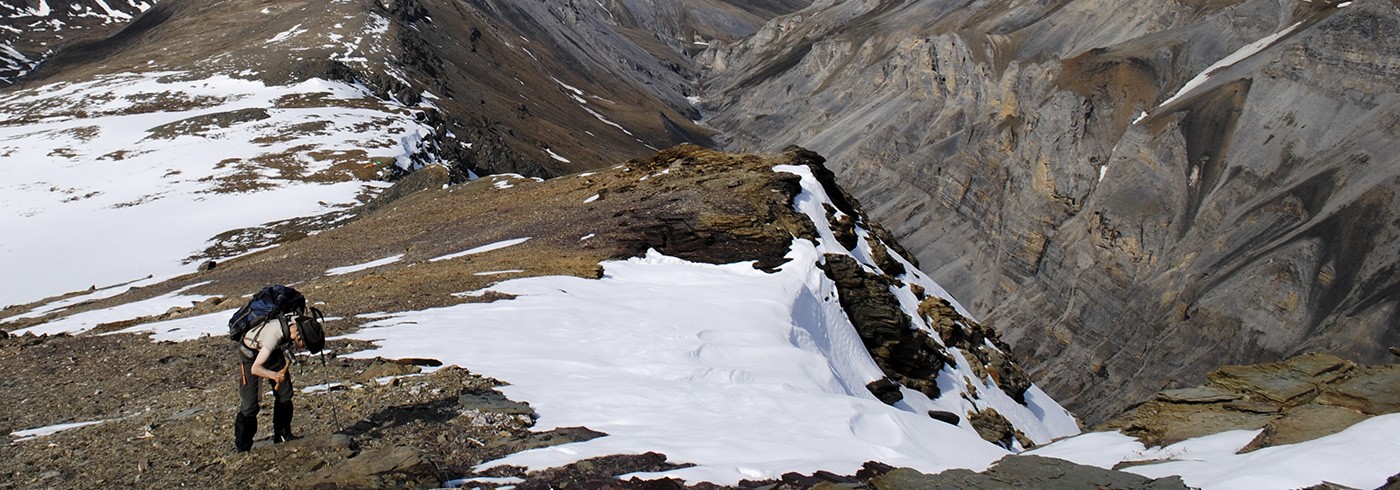Recent discoveries in Arctic geology have suggested that the Caledonian mountains (which track from Scotland through Norway and similarly from Appalachia across Greenland) actually continued further north prior to the opening of the Atlantic and Arctic oceans. Where this northern continuation of the Caledonides has been displaced is still a subject of much speculation. The most likely model calls for its continuation to be located somewhere within the central Brooks Range, Alaska.
The researchers tested this model by reassessing the age, chemistry, and tectonic significance of an enigmatic suite of volcanic rocks that may prove to be Caledonian in affinity. Because a strict no-fly zone has been imposed over the National Park where these are located and due to its remote and rugged location, no geologist has been able to study these rocks for over 25 years.
The researchers was part of a collaborative expedition that was permitted one trip to collect key geologic samples within a stratigraphic and structural context. These new data sets will help constrain models for the displacement of the northern continuation of the Caledonian mountains.
Principal investigator
Carl Hoiland
Department of Geological Sciences, Stockholm University







